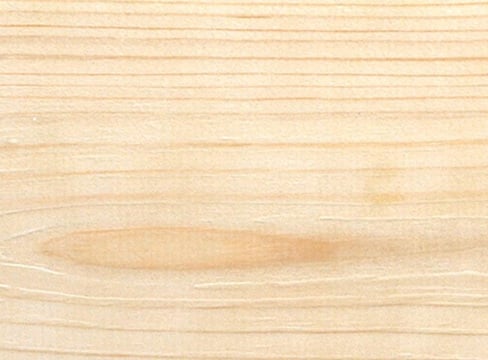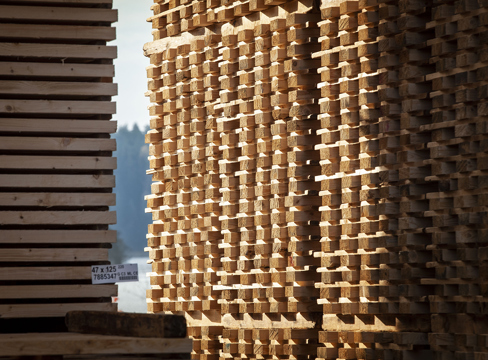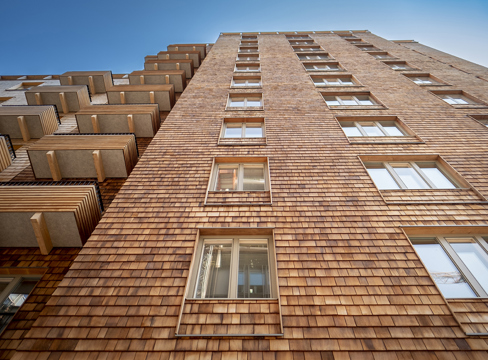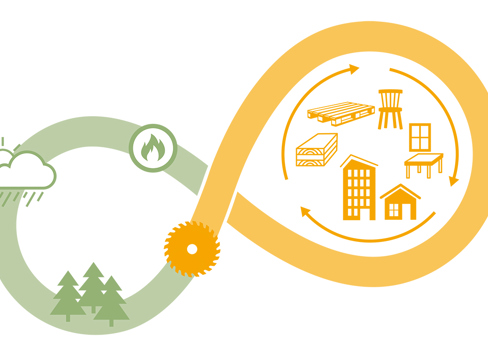Wood packaging
Our consumer society is driven by various kinds of consumption. The materials we consume are a major factor in reducing our carbon emissions and our climate footprint. One approach is to think about resource efficiency and review how our products, large and small, are packaged.
The purpose of packaging is partly to protect a product, which has already generated a climate footprint, on its journey to the consumer, and partly to preserve the product’s specific properties. This means that a packaging material may be optimum for one product, while not being at all functional for another.
It must also be possible to transport the product safely, with a low environmental impact. Carefully considered packaging design and production methods provide a good balance of economics, resource consumption and function.
The packaging industry is currently working hard to establish a circular economy for packaging. The aim is to return as much waste as possible back into the packaging ecocycle. The waste generated also needs to be purer so it can be reused and recycled to an even greater degree than is currently the case. This will enable the same resource to be used several times over.
Wood’s contribution
Wood packaging such as a pallet can be reused up to 70 times before it is recycled and turned into something else. Sweden alone has 30 million pallets in circulation in any one year.
Once the solid wood packaging has served its purpose, most of its components can be separated out and sorted for further use or recycling. Specialist wood packaging such as the packaging used in the distribution of customised and individual products is reused on site, or can be dismantled and deployed as a building material.
From raw material to end product, wood is a good packaging material from a climate perspective. But, in addition to the material’s renewable properties and scope for reuse, there are other factors that should be considered in the lifetime of the wood packaging – not least logistics, transport and opportunities for waste sorting and recycling.
At construction sites, logistics are crucial in determining the amount of waste created. Having building materials and components packed on pallets with pallet collars can usually help to make optimum use of the limited space on a construction site. And major reductions in waste can be achieved by enabling the reuse and recycling of empty pallets and other types of wood packaging on site.
Recycling wood packaging should be easy
Many builders’ merchants and timber merchants now offer a take-back service for empty packaging in conjunction with the delivery of new building materials to a construction site. However, most of the volumes involved are collected for reuse.
Having systems in place for the use of returned packaging can allow high-volume products to be reused with or without repairs. Repairs are included in a system where the product is priced to account for repair services, collection and storage. Systems for reuse may be open or closed.
A closed returns system operates within the confines of a company’s own operations. The closed system works best with stable flows and short distances. Under these conditions, the wood packaging can be taken back in conjunction with regular deliveries. High turnover and low loss rates are important for the success of the returns system.
An open returns system allows different companies to sign up to a single system. The Europallet (EUR) is a prime example of an open system. The product, the pallet and the associated procedures are all standardised.
The thresholds for returning need to be low so the customer can see the benefits of returning pallets for reuse.
Regulations and standards – Sustainable packaging
An overview of sustainability labels and certifications:
EU Directive on Packaging and Packaging Waste
All production of packaging within the EU is subject to the EU Directive on Packaging and Packaging Waste and the producer responsibility set out in the directive. A producer is anyone who professionally manufactures, sells or imports complete packaging or a component of packaging.
The required level of recycling in Sweden is set at 15 percent, but under the new Waste Directive this will rise to 30 percent by 2030. It will also be followed up by measuring circularity: what proportion of the product is recycled. For wood packaging, this involves collecting information on the manufacturers’ imports, exports, production, repairs, recycling and reuse, and then converting the figure into tonnes. The total amount of recycled and reused material is divided by the amount placed on the market in Sweden.
Standards for wood packaging
- Boverket’s regulations and general recommendations on applying European construction standards (Eurocodes).
- BFS 2015:6 EKS 10. Boverket, 2016.
- DIN 603:2017-05 Cup head square neck bolts (German).
- Deutsches Institut für Normung, 2017.
- SS 230120:2010 Nordic visual strength grading rules for timber
(INSTA 142). SIS Förlag AB, 2010. - SS 842003 Pallets – Testing and requirements. SIS Förlag AB, 1979.
- SS 842801 Cable drums – Dimensions. SIS Förlag AB, 1983.
- SS 842802 Tests and requirements. SIS Förlag AB, 1983.
- SS-EN 338:2016 Structural timber – Strength classes. SIS Förlag AB, 2016.
- SS-EN 1611-1 Sawn timber – Appearance grading of softwoods – Part 1: European spruces, firs, pines and Douglas firs. SIS Förlag AB, 2000.
- SS-EN 1991 Actions on structures. SIS Förlag AB, 1991.
- SS-EN 1995-1-1 Eurocode 5: Design of timber structures Part 1-1: General – Common rules and rules for buildings. SIS Förlag AB, 2004.
- SS-EN 13183-1 Moisture content of a piece of sawn timber – Part 1: Determination by oven dry method. SIS Förlag AB, 2003.
- SS-EN 13545 Pallet superstructures – Pallet collars – Test methods and performance requirements. SIS Förlag AB, 2002.
- SS-EN 14081-1:2016 Timber structures – Strength graded structural timber with rectangular cross section – Part 1: General requirements. SIS Förlag AB, 2016.
- SS-EN 14298:2017 Sawn timber – Assessment of drying quality. SIS Förlag AB, 2017.
- SS-EN ISO 780:2016 Packaging – Distribution packaging – Graphical symbols for handling and storage of packages. SIS Förlag AB, 2016.






